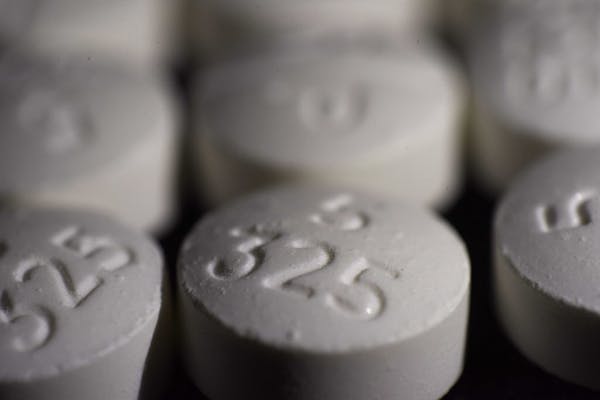The Dayton administration unveiled new guidelines Friday for curbing opioid prescriptions and weaning chronic pain patients off the addictive painkillers.
Lt. Gov. Tina Smith commended a state work group for drafting the guidelines, which encourage doctors to use the lowest possible opioid dose for treatment of acute pain after surgeries or injuries and discourage the long-term use of opioids for chronic pain.
Smith also endorsed a "penny-a-pill" fee that would raise $42 million every two years to finance prevention programs in Minnesota. She said expanded programs are necessary given the rapid increase in overdoses and deaths from both prescription painkillers and illicit opioids such as heroin.
"We cannot expect to make meaningful progress without a significant and sustained investment in prevention, treatment, and recovery," Smith said.
The guidelines set dosage limits on opioid prescriptions for acute, short-term pain, as well as a process for alerting, training and potentially sanctioning doctors who routinely ignore those limits.
The guidelines also urge doctors to avoid starting opioids as chronic therapy because there is little evidence that the drugs offer long-term benefits, and to begin to change habits of people taking opioids for months and even years for pain relief.
"For too long Minnesota's health care community, like that of the rest of the nation, has not addressed the problem of pain management in a comprehensive manner but has relied on expedient and largely ineffective solutions such as pills, procedures and quick visits," said Dr. Chris Johnson, an Allina physician who led the state opioid prescribing work group.
The draft guidelines are available for public review and comment for the next 30 days, and will likely draw concern from chronically ill patients who fear that opioid abuse by addicted users will make it harder for them to obtain the drugs on which they depend.
The guidelines technically apply to patients covered by the state's Medicaid programs, but are expected to influence prescribers' overall practices, state officials said.
Prescription opioids, heroin and emerging synthetic drugs such as fentanyl contributed to 402 deaths in Minnesota last year, according to a Star Tribune review of state records. That annual total has doubled in the past decade and increased sixfold in the past two decades.
Doctors and hospitals have been changing opioid prescribing practices already; the most recent Drug Trends report by substance abuse expert Carol Falkowski showed a 22 percent reduction in the amount of hydrocodone dispensed in December 2016 compared to December 2014. The opioid painkiller remains the most commonly dispensed drug, though, accounting for 13.5 percent of prescriptions in the state last December.
Jeremy Olson • 612-673-7744
